The steel towers of Kuala Lumpur glint in the morning sun as my train pulls out of KL Sentral. A short, two and a half-hour train ride north will deposit me at what was once the largest tin producer on Earth—Ipoh.
If you read tourism PR much, you may have encountered the town, often described as Malaysia’s “other Penang.” It is true it lacks to the same extent the hordes that blight Penang’s George Town, but untouristed it is not. More to the point, its roots lie in harder stuff than the colonial administration that built George Town. In Ipoh’s case, it is all about tin.
Always good to have a sign to remind you of where you are. Photo: Stuart McDonald.
Malaysia (then Malaya) in the early 1900s was very much an extractive undertaking. Around the turn of the century, the peninsula was almost covered with forest—including some of the oldest rainforests on Earth. Eyeing the tremendous value, the colonialists granted vast exploitative concessions to resident Brits. The timber felled, they’d export it, delivering enormous wealth—to the concessionaire. In a tilt at turning the land to labour, in its place came tea, rubber and palm oil. These cash crops would see the denuded land deliver an ongoing return to the Brits.
It hasn’t been just the colonialists of course. Long after they’d left, Malaysia has remained in the thrall of these often politically-connected industries. In 2013 it shamefully held the record for the highest deforestation rate on the planet. But that’s fodder for another post, instead, I’m going to wheel back to a concessionaire.
Not short of arches. Photo: Stuart McDonald.
While I’d never heard of the place till today if I had to suggest a candidate for “place most unlike anywhere in Peninsular Malaysia,” Kellas would be it. Set between the south coast of Scotland’s Moray Firth and Cairngorms National Park, the town is the namesake of a once thought to be mythological cat. Reads the entire entry on Wikipedia:
“Kellas is a village in Moray, Scotland. It is approximately 3 miles (5 km) northeast of Dallas on the B9010 road. The Kellas Cat is named after the village.”
It also happens to be the birthplace of one William Kellie-Smith, who landed sometime in 1870. Two decades later, grown up into a civil engineer, he arrived in Malaya. Like many of the time, he got into extraction and made a windfall off of forestry around Batu Gajah.
Looking down upon the ruins of Kellas House. Photo: Stuart McDonald.
Feeling flush, he bought 1,000 acres in the district of Kinta and started putting rubber into the ground. He built what is described as a modest wooden bungalow to live in, but considering what came next, think a bit less modest than a beach bungalow. As his fortune grew, in a nod to the Motherland, he named his landholding “Kinta Kellas”.
In the early 1900s, he returned home to marry his childhood love, Agnes, who, like him, had come into a truckload of dosh. Unlike him, she’d got it through inheritance rather than by levelling a parcel of a foreign country.
Ghost sightings are common. Photo: Stuart McDonald.
In 1904 their first child, a daughter, was born, and within a half-dozen years, his first project was complete. Dubbed “Kellas House,” the brick mansion was to be but a staging ground for a far grander dream. The dream? Kellie’s Castle.
Depending on who you read, the castle was to be a gift to his wife or newborn son, the latter born in 1915. Whatever the true intention, his wife paid for it, which saw some of his peers refer to it as “Agnes Palace.” Expats, I tell ya, always back-biting.
The architecture, a fusion of Roman, Moorish and Indo-Saracenic, was a bit of a flavour of the day, but Kellie-Smith took it further. He brought in 70 skilled workers from Madras to build it, even the bricks were Indian imports. Italian marble also featured—spare no expense it seems. Cement did not exist in Malaya at the time, so a mix of duck egg-white, sand, chalk, brown sugar and honey affixed the bricks. The structure contains not one nail, nor any metal—not even tin.
Reasonably-sized lodgings for a family of four. Photo: Stuart McDonald.
The finished plans called for fourteen rooms (for a family of four), an indoor tennis court (why?!) and a rooftop terrace for entertaining. Yet, there were strange omissions. The plans featured no servants’ quarters, kitchens or bathrooms. Pierced with ventilation holes throughout, the castle was to be cool and classy, but with nowhere to pee.
There were though tunnels, secret staircases and hallways—and ghosts. While accounts make no mention of lingering paranoia or tin foil hats, his relations with expat-land were not great. The colonial administration ridiculed him for both his business acumen and needing his wife’s money. The Castle, some suggest, was Kellie-Smith’s effort to prove them wrong. It would be grander than even the Residency in Taiping. Or not.
During construction, other than the workers, the entire estate was devoid of residents. Agnes and the children were back in Britain for schooling. Kellie-Smith spent large tracts of time in Timor where he had a new planting concession.
The most popular spot for ghost sightings. Not creepy at all. Photo: Stuart McDonald.
Then the time came for the installation of the Castle’s crown jewels—an elevator. Not just any old elevator, but rather the first elevator on Malayan soil. In 1926, while travelling to Portugal to pick one up (as you do), Kellie-Smith, then aged 56, caught pneumonia and died.
The Castle was never finished and, Agnes, by then living in a “well-appointed apartment” near Harrods in London, never returned.
Couchfish is 100 per cent independent and reader-supported. Please feel free to share this story with a friend. Thank you!




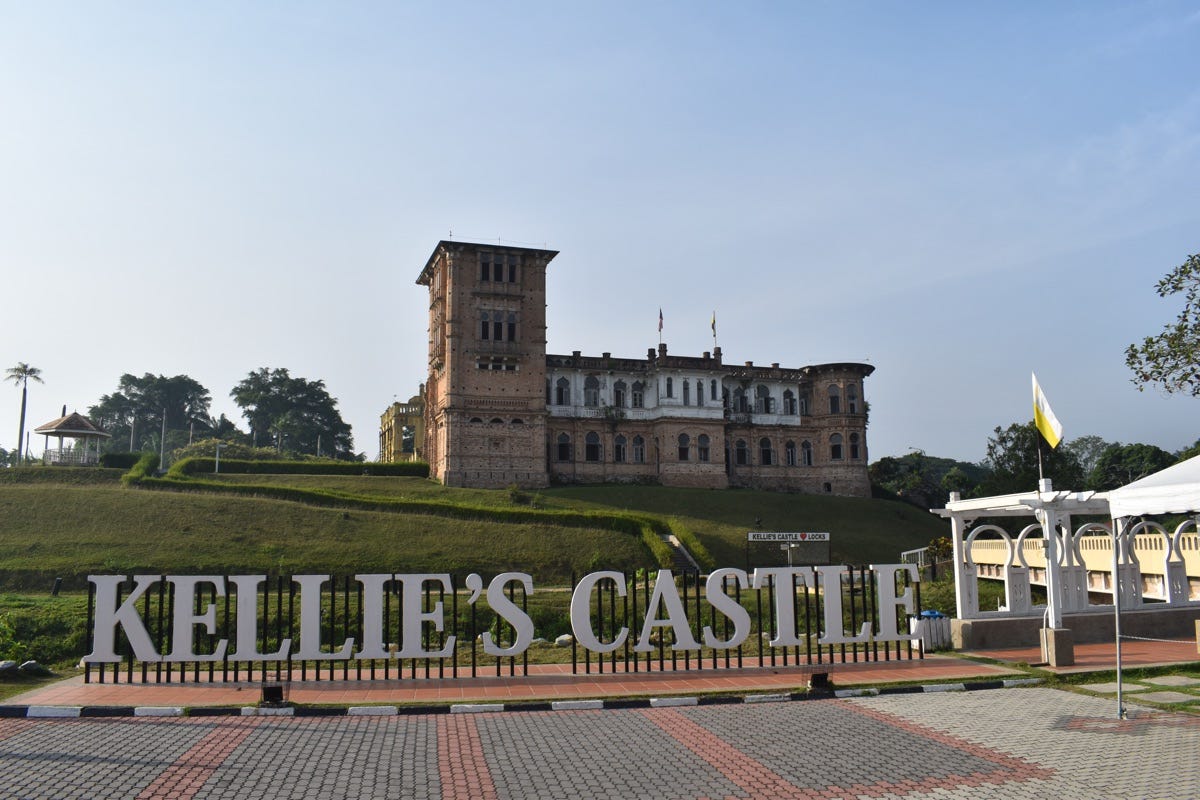
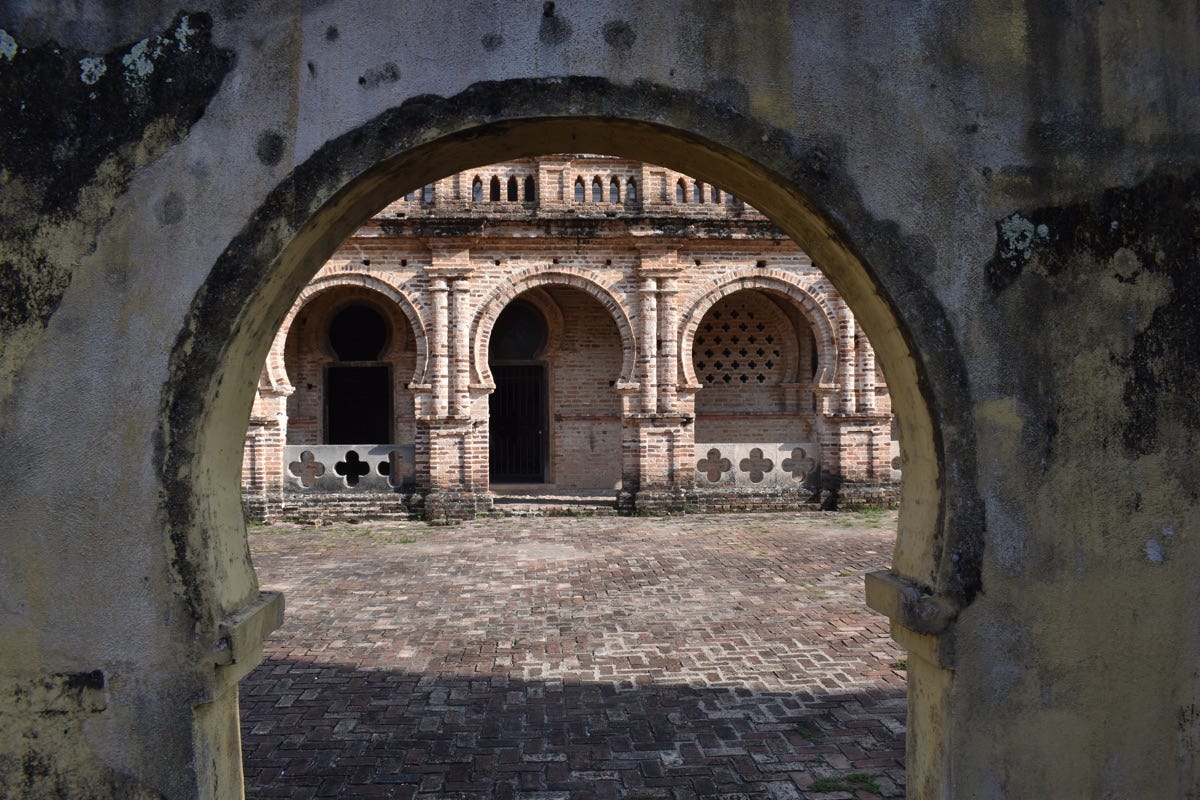
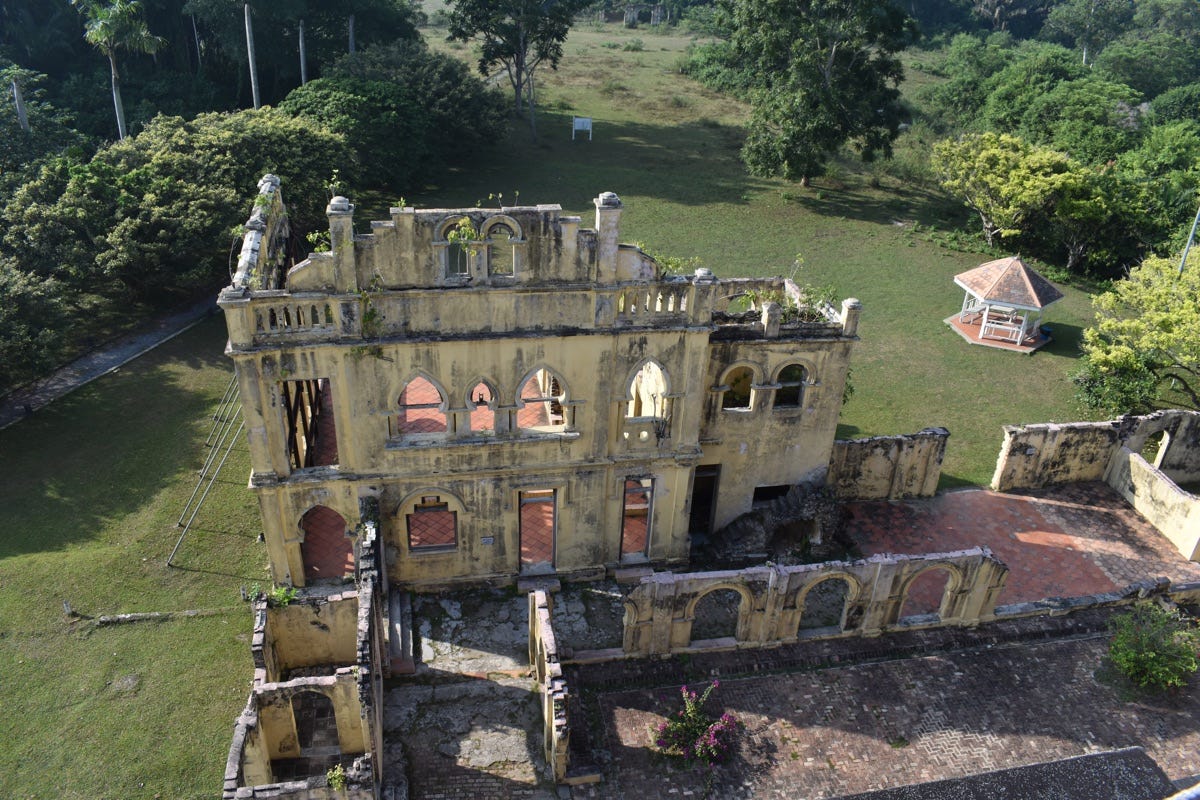
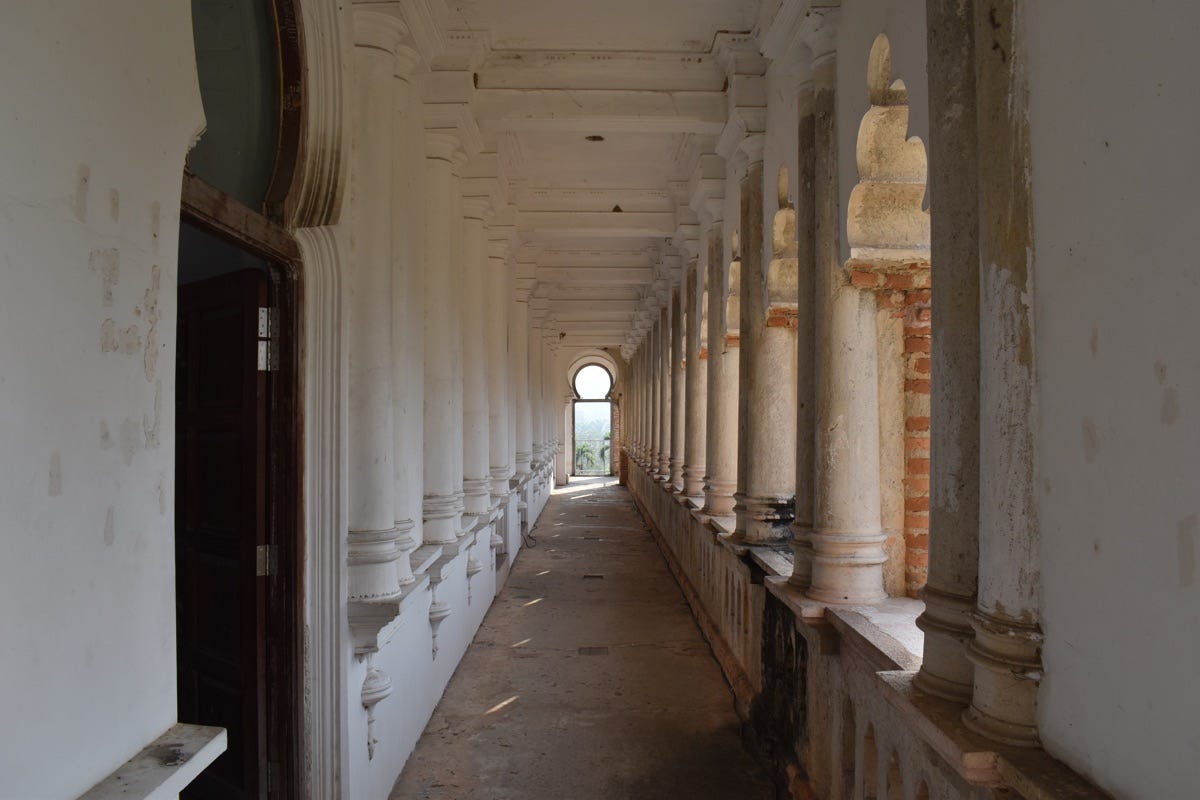
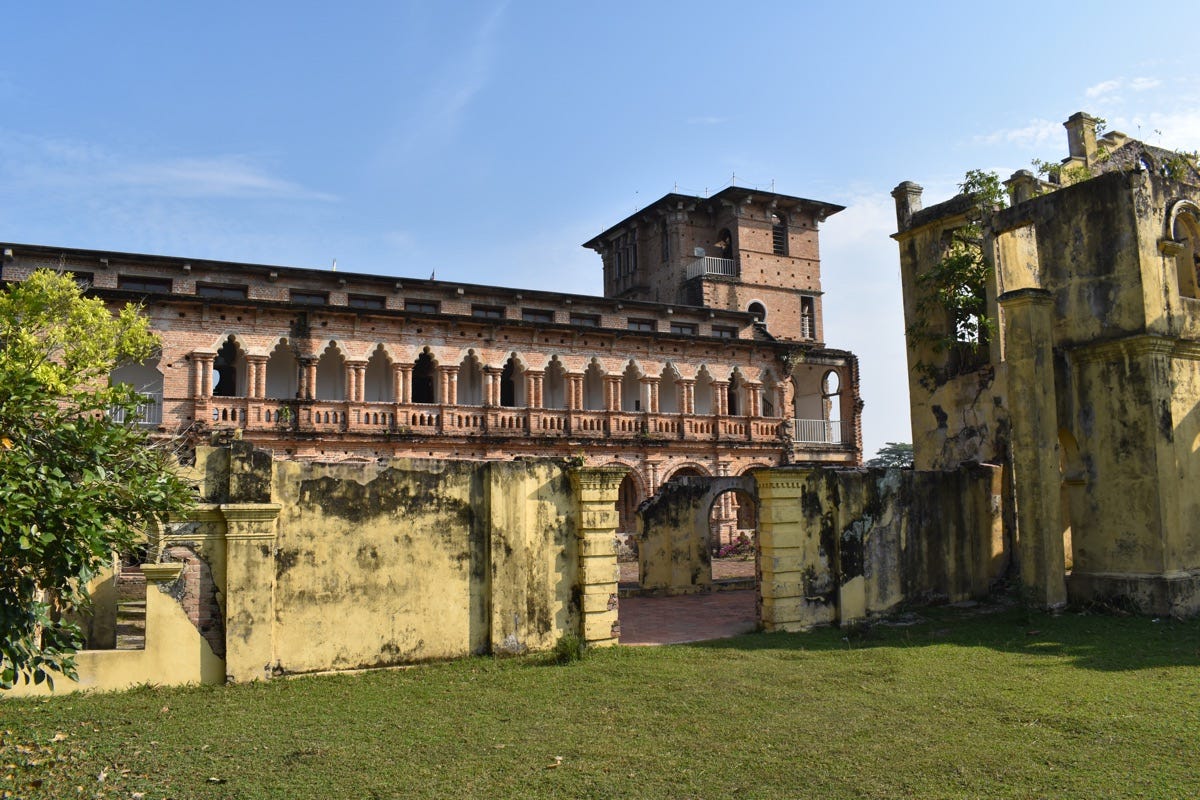
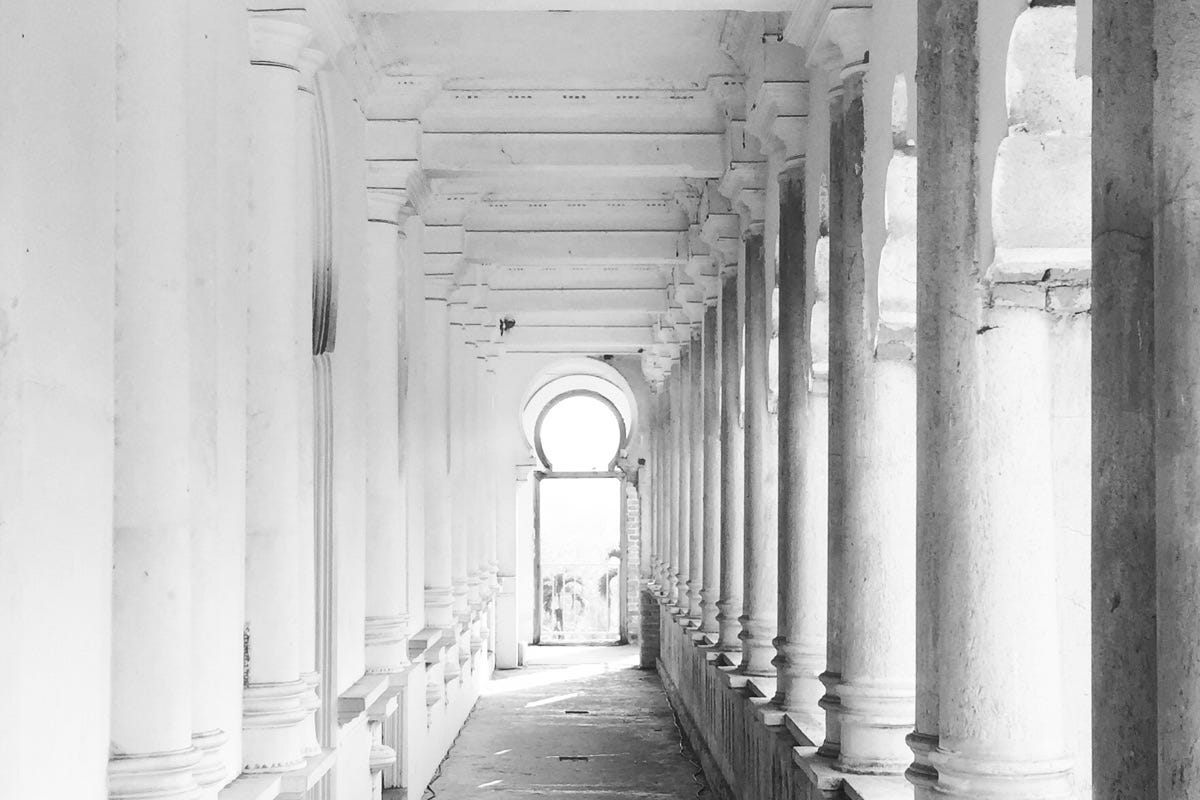









Share this post